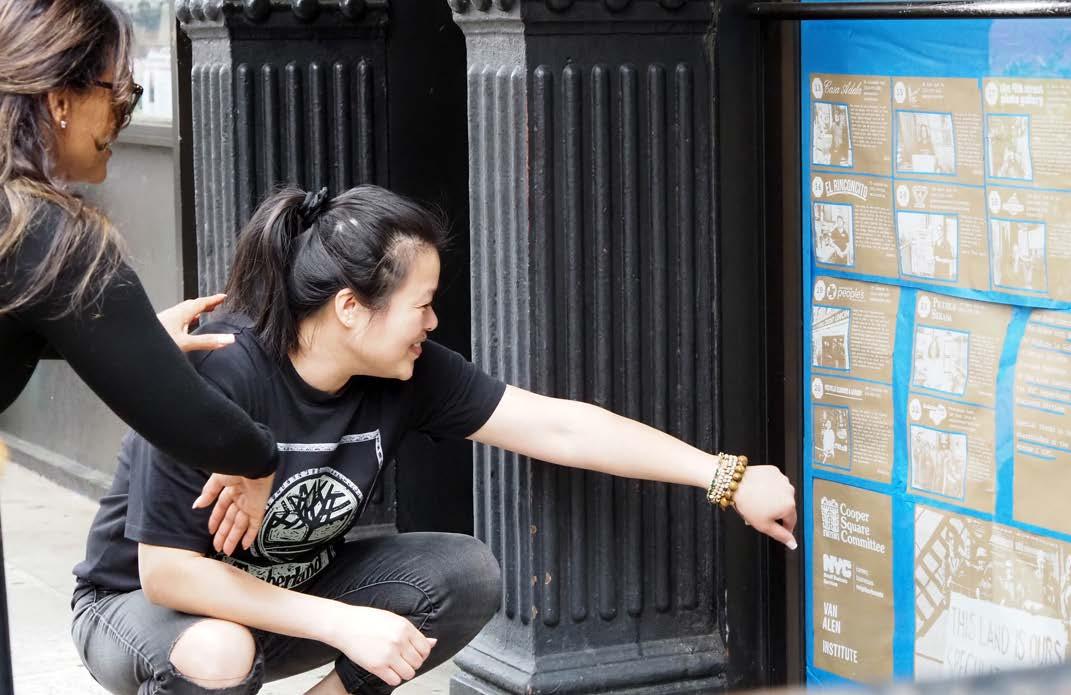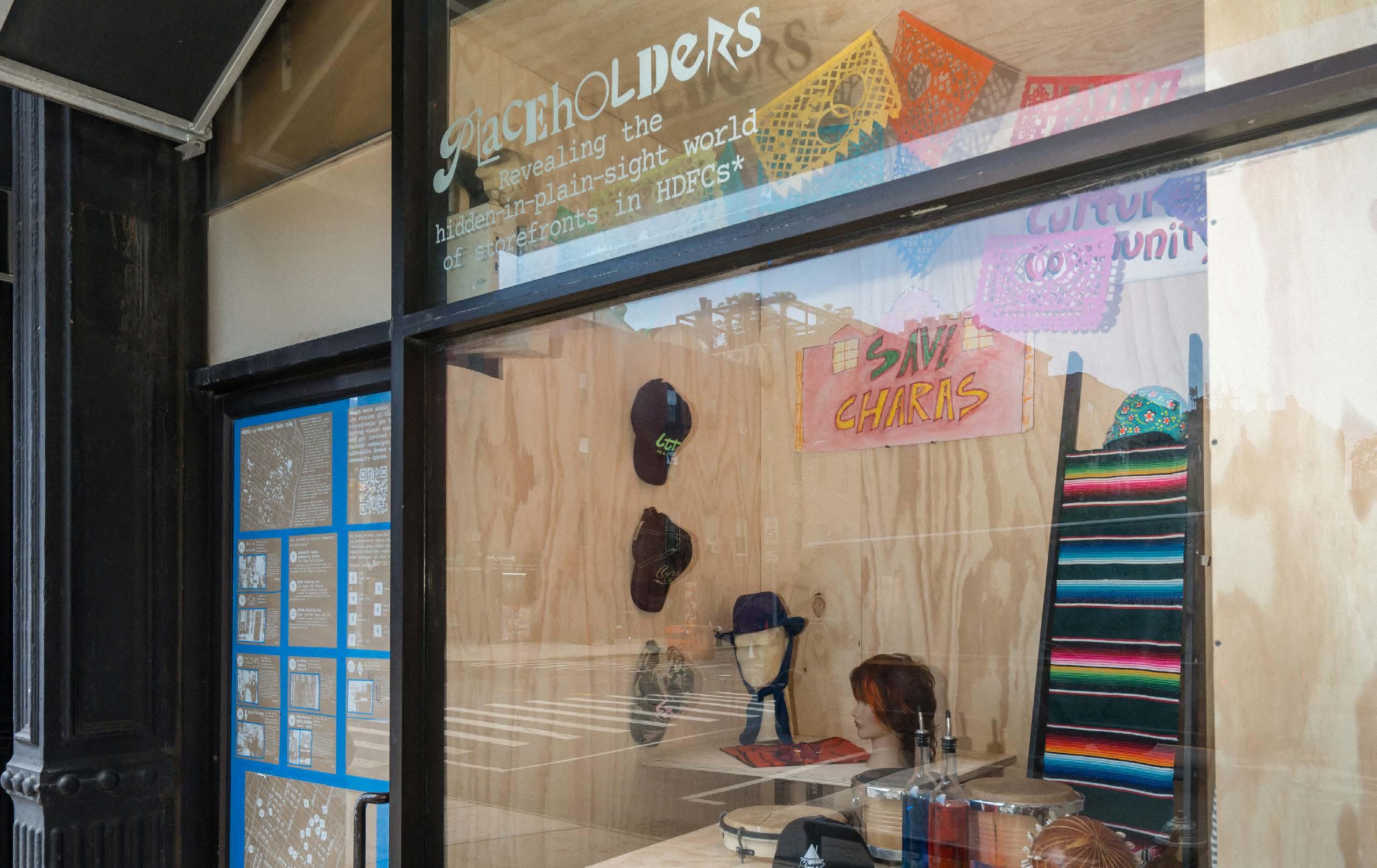

Design Sprints:



Design Sprints: Building Creative Capacity
Van Alen Institute’s Design Sprints — a fast-paced community-led design program — mobilizes community leaders, equipping them with design training, technical assistance, and cross-disciplinary collaboration. In Spring 2025, Van Alen partnered with the New York City Department of Small Business Services’s (SBS) Building Creative Capacity Program. This partnership explored the intersection between arts programming and economic development, with a focus on areas with high storefront vacancy. Design Sprints paired local organizations with design professionals to activate storefronts and address the vital role of culture in maintaining thriving commercial corridors. The program was made possible through SBS’s Avenue NYC Organizational Development Grant.
Using this Guide
This document is meant to help Community-based Development Organizations and Business Improvement Districts considering creative solutions to address vacant storefronts in their commercial corridors. The recommendations selected were important considerations that groups had to think about when planning their successful activations and may be useful for small organizations with their own storefront or those impacted by vacancy — such as grassroots groups, tenants rights advocates, and low-income cooperatives.
Cooper Square Committee: Lower East Side Storefront Activation
Placeholders: Revealing the Hidden-in-Plain-Sight World of Storefronts in Affordable Housing Co-ops
Location: 165 & 169 Ave C — Loisaida Ave, Manhattan
Dates: On view May 25–June 30, 2025
Project Team: Abigail Ellman, Director of Planning and Development, Cooper Square Committee; Scott Kelly, Graphic Designer; Delphine Le Goff, Visual Merchandiser

Project Collaborators: Sean Slaney, Fabrication; Graduate Student Intern, Cooper Square Committee; Farzana Gandhi, Design Advisor, Farzana Gandhi Design Studio; Hilary Sample, Design Advisor, MOS Architects; Van Alen Institute
As the oldest anti-displacement organization in the United States, Cooper Square Committee works with residents to preserve and develop affordable, environmentally-healthy housing and cultural spaces on the Lower East Side. Due to decades of grassroots organizing, the Lower East Side is home to many Housing Development Fund Corporation cooperatives (HDFCs), a unique type of affordable housing collectively owned and operated by residents. HDFCs often rent their storefronts to small businesses, artists, and nonprofits that serve local needs, nurture creativity, and express culture. Collectively, HDFCs offer a stable model for residents and small businesses facing the threat of displacement.

Project Summary
Placeholders, led by Cooper Square Committee (CSC), was successful in part due to CSC’s ability to leverage long-standing relationships with HDFCs to connect with a network of people and spaces available for renovation. Through interviews and research into storefront vacancy, CSC heard from HDFC owners’ preference for renting their storefronts to businesses that required little interior renovations and limited noise. The project also benefited from the Lower East Side’s strong community ethos — an area known for engaged residents and legacy small businesses committed to maintaining the neighborhood’s cultural identity.
Offering a glimpse into this vibrant community, Placeholders showcases items from local businesses located in HDFCs in a site-specific installation. Items include a camera from Fourth Street Photo Gallery, the city’s oldest Black-owned photography studio; a hand-painted mortar and pestle from Puerto Rican restaurant Casa Adela; and handmade Mexican folk art from art store La Sirena. The exhibition is supplemented by a map of local businesses.
The steps below offer an overview of the main elements that will be necessary for partners considering activating vacant storefronts:
Create a Design Concept: Ideate
With Your Design Team to Reflect the Local Context
When considering a vacant storefront activation, it’s important to include the local context and unique neighborhood assets as a driver of your design. The Placeholders Design Team valued the specific graphic quality already present in the neighborhood where printed 8.5” x 11” flyers are posted, often layered over top of the previous one, to create a graphic pattern that is referential to the Lower East Side. Additionally, since blue painter’s tape and kraft paper are commonly used when a vacant storefront is empty or under construction, the design team considered it an inspiration for the storefront window design to work with low-cost and existing materials. Reimagining these practical materials made it easy to remove and swap design elements, in effect becoming an invitation for the community to showcase small businesses as printed advertisements in the community.
The visual merchandiser designed and fabricated plywood storefront displays in partnership with a local woodworker. The ideation and design process included a series of sketches and digital drawings for a window display filled with objects from local small businesses. A Zine, designed by graphic designer Scott Kelly, highlighted participating businesses and accompanied the exhibition.
Lay the Foundation: Goals, Roles, and Project Flow

Short term: Demonstrate a model for activating storefronts in HDFCs and highlight the stories of local businesses and cultural spaces located in this type of affordable housing co-op.
Longer term: Increase awareness of CSC’s history and current work with both HDFCs and commercial tenants, thereby assisting desirable commercial tenants to locate HDFCs with available-for-rent storefront space.
CSC led outreach efforts to engage and collect objects from local storefront owners with the help of a graduate student intern. Out of 35 storefronts approached, 19 participated, contributing meaningful items that helped tell the rich story of the neighborhood.
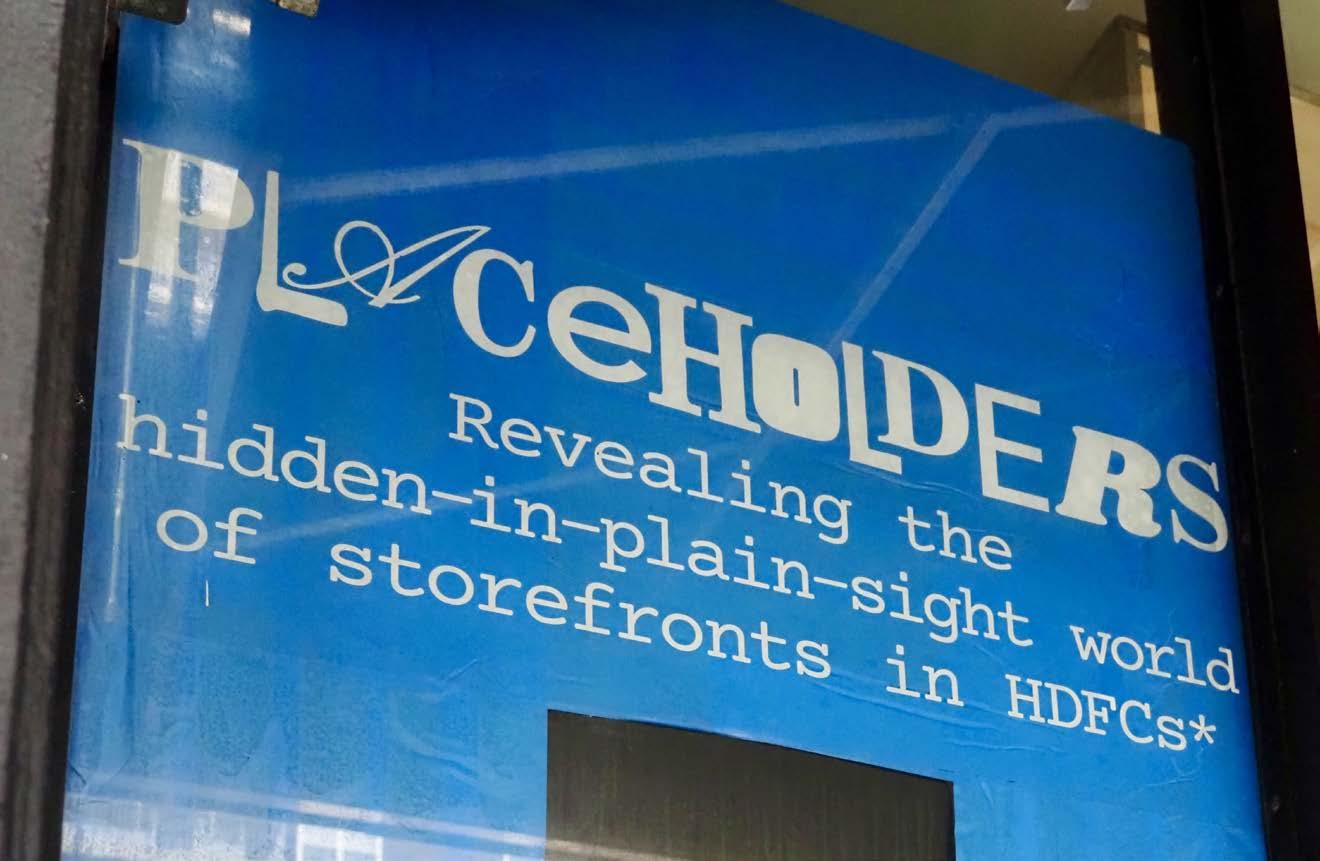
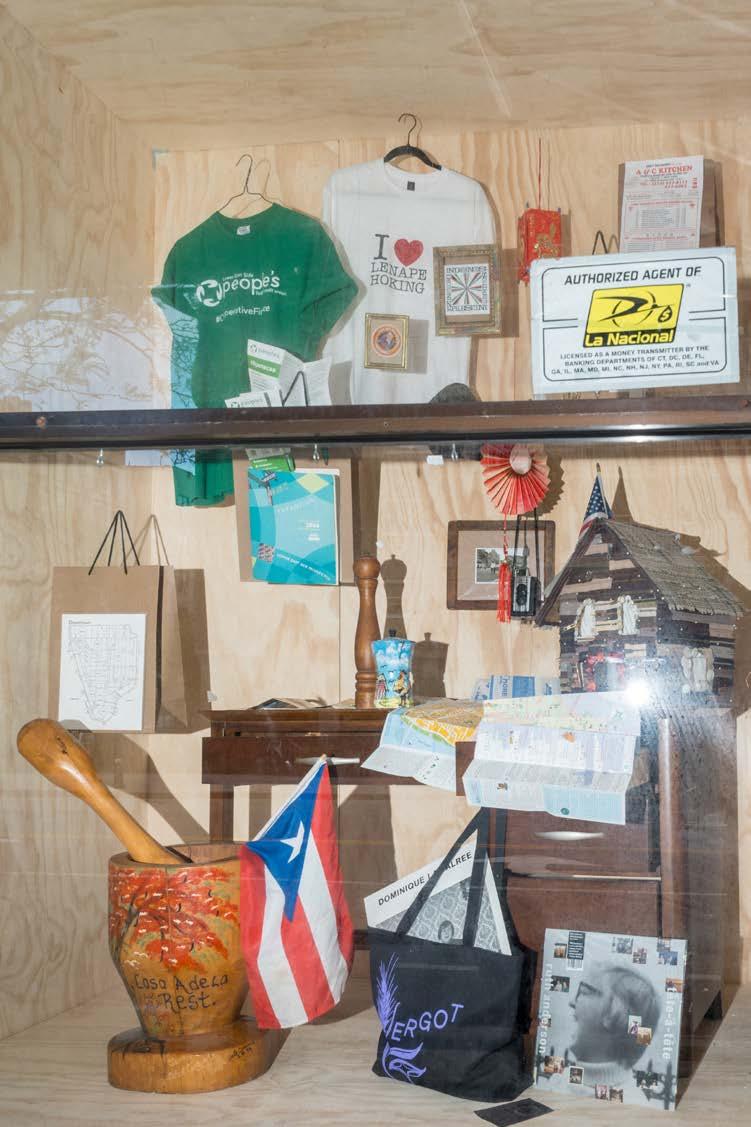
Be Strategic: Location and Timeline Go Hand in Hand
Storefront Selection & Timeline Impact
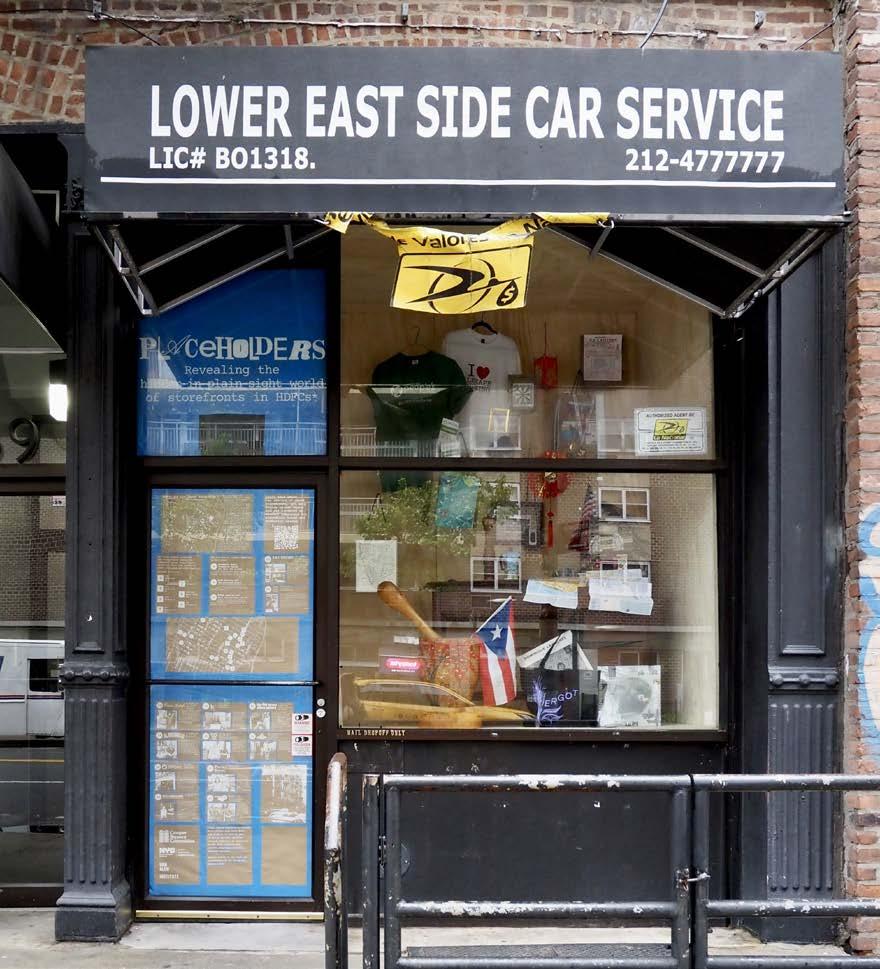
Easiest Moderate Toughest
Own storefront
Existing positive relationship with landlord
Ability to offer incentives to landlords
Ability to provide clear terms & agreements
Storefront has a friendly/known future tenant
Known co-op ownership
Know the landlord, but do not have a strong relationship
Unknown co-op ownership
Storefront has an unfriendly, unknown, or bigbox future tenant
You just “know of” the storefront, nothing else
When selecting your storefront, there are criteria that will impact your timeline. While Design Sprints: Building Creative Capacity sought to build relationships with property owners, activating privately-owned vacant storefronts can be a challenging undertaking. The easiest activations would be in storefronts that you own or already operate, as you would not need to go through the process of coming to an agreement with a landlord. Van Alen Institute has recently activated their own storefront with vinyls for projects including GLOwanus and The Dear Neighbor Project . You may always consider expanding your activation to additional storefronts including your own. Addressing the challenge of storefront vacancy requires building strong relationships with property owners to understand their motivations and involving them in the community benefits of the project goals.
Timeline Impact: Property Owner Engagement
Working with a landlord or property manager you know well is likely to be easier than establishing a new relationship. You will simply need to adjust your timeline. Consider offering clear terms and conditions in addition to incentives to landlords. For this project, Design Sprints: Building Creative Capacity activated a storefront owned by an HDFC cooperative. In this case, you will want to consider that decisions will need to be made by a board, rather than by an individual, and that your timeline may be impacted depending on the cooperative you are working with.
Breakdown Your Budget: Project vs Design Budget
The project budget is a key part of the conversation for activating a vacant storefront. The project budget is generally understood to be the total costs of a project, which includes design, labor, fees, insurances, fabrication, materials, de-installation, and miscellaneous costs. The design budget includes the cost of the designer and any consultants. The fabrication budget includes the costs to construct the design. There may be project-based costs that are independent of the design and should not impact the design budget. Projects can be developed using pro-bono or low-bono services. For the purposes of this report, staff time is excluded.
Item Cost Note
Shadow Boxes
Printing
Transportation
Miscellaneous
Total
$3,000 Low-cost fabrication (construction including materials and labor) from project partner
$450 Vinyl window decals, kraft paper, professional printing, tape
$100
$100 Window cleaning supplies
$3,650
Plan for Flexibility: Identify Alternate Storefronts
The storefronts on Avenue C were selected due to a unique advantage: several vacant units were under the same ownership. This allowed for streamlined decision-making, as only one co-op board was involved, rather than multiple. At this location, CSC secured access to two storefronts. Some physical challenges quickly became apparent. First, the two storefronts were not adjacent, which meant that the design had to clearly communicate that both windows were part of a single, unified installation. Second, there was no power available in either space, requiring creative, non-electric design solutions.
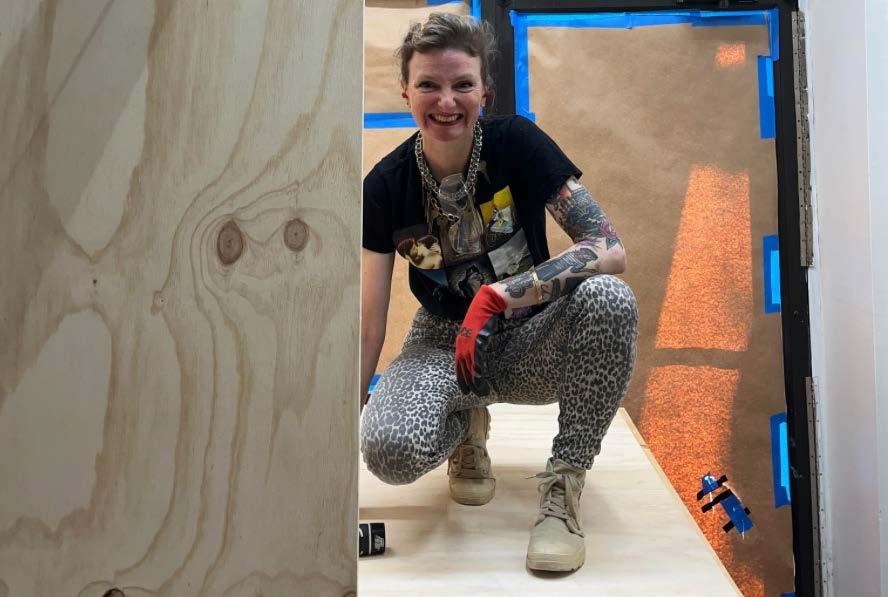
The project aimed to highlight the network of HDFC commercial spaces in the East Village so Cooper Sq Committee compiled information on vacant storefronts in their commercial district. They used the list of locations below to identify other potential activation opportunities that don’t require expensive adaptive reuse. Your project team should put together a similar inventory to track vacancies within your commercial district.
District Storefront Vacancy Inventory:
Accurate as of 5/15/25
Location Condition / Status
167 Avenue C Vacant for rent
304 East 8th Street Vacant for rent
71 Avenue C Vacant for rent
528 East 11th Street Vacant for rent
406-408 East 10th Street Vacant for rent
195 Avenue C Vacant for rent
298 East 3rd Street Vacant for rent
HDFC Contact
Roger Varela
Pramilla Malick
Fernando Sanchez-Magrane
Nelson Valentine
Andrea Alexopoulos
Andrea Alexopoulos
Fernando Alfonso
653 East 5th Street Visibly vacant, more information needed Fernando Sanchez-Magrane
551 East 12th Street Visibly vacant, more information needed n/a
7 East 3rd Street Visibly vacant, more information needed n/a
129 Ridge Street Visibly vacant, more information needed n/a
17 Clinton Street Visibly vacant, more information needed n/a
288 Broome Street Visibly vacant, more information needed n/a
110 Forsyth Street Visibly vacant, more information needed n/a
152 Forsyth Street Visibly vacant, more information needed n/a
Additional information about these storefronts are available on the Live XYZ website.

Define the Project Scope: Align Your Activation Within Budget
Project Scope & Budget Impact
Affordable Moderate Expensive
Small storefronts
Gate/murals
DIY projects
Displaying existing /historical /donated objects
Using paper low/ cost materials
Med. Storefronts
Small vinyls
Alternatives such as fiberboard
Artist fees & handymen
Business & community engagement
Large storefronts
Large vinyls
Interior activations
Professional fabrication of sculptures or furniture
Renovations, electrical work
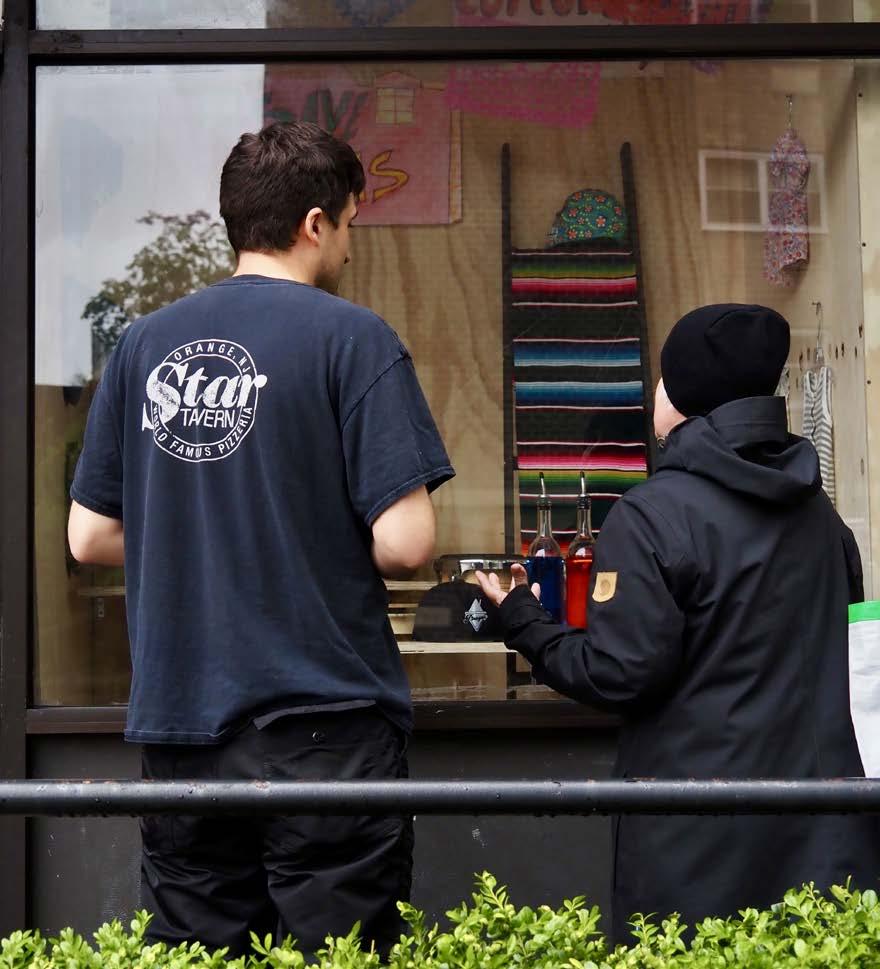
After you identify a vacant storefront, make sure it is physically empty (not leased or rented) and available during the period of the project. While a storefront may appear vacant, it may still have a lease or be rented. A vacant storefront may not have access to water or electricity. Without electricity, the storefront activation might not be able to provide power for lighting. It’s important to consider how the storefront would look during the day and night. You should have a budget in mind to start planning where you will allocate that budget. Your initial scoped project will also likely not be your final product. Your storefront size will have a major impact on your budget. However, you may opt to use only a portion of a large storefront. Similarly, you may expand to several small storefronts as the CSC team did.
The fabrication process should also be considered at the scoping stage. An installation that requires professional fabrication support (i.e. sculptures, vinyls) will cost more and will take time due to the bidding process. Best practice is to contact several fabricators with clear drawings prepared by your designers and choose the most competitive estimate. The drawings can be sketches, renderings, illustrations, and architectural plans and sections. Typically fabricators or builders give more accurate pricing if drawings are dimensioned. If you fail to account for ample time, the process will be rushed and you may find yourself with fewer options. On the other hand, engaging with local businesses or the community to create a more low-cost installation, or even with one local artist, could be more cost effective. Other scoping considerations include:

1. Designer/Artist Agreements & Compensation:
For the purposes of this program, all designers were contracted and provided a low-bono stipend through Van Alen Institute. When going through an activation of your own, you will want to conduct outreach to design professionals early in the process, provide them with an idea of your vision and timeline, and be clear about any compensation you can provide. Once you have identified your team, formalize agreements with them outlining the project, responsibilities, timeline, and payment.
2. Project Management & Maintenance:
Project management responsibilities for Design Sprints: Building Creative Capacity were divided between the design team, the program manager at Van Alen Institute, and the community partners through fabrication. It should be noted that these projects may require more time from a team member than anticipated. If you do not have a project manager on your team, you may want to make sure that a designer will assist with that aspect of the project.
Once installed, maintenance may be required, this will ultimately likely fall on you as the organization that planned and funded the project. However, there are quite a few ways to mitigate maintenance. These should be discussed with your project manager/designers. The activations in this pilot program are fully behind glass windows, meaning any defacing can be easily washed away. The materials used for Placeholders were intentionally designed to be replaceable and interchangeable.

3. Community Engagement & Public Programming:
Public engagement is an important component to help elevate the activation and gather community support. For CSC, participation was anchored by the Loisaida Festival and supported by both guided and self-guided walking tours. Additionally, CSC hosted a workshop series to bring commercial leasing resources to the community.
4. Take Advantage of Available Resources:
Resources and other supporting materials are available upon request for any groups seeking more guidance to plan their own facade activations. Reach out to Van Alen Institute or SBS for more information accessing any of the following materials:
Grand Street BID Vacant Storefront Activation Report
Materials for the Arts
Workshop: Design Tools for CBDOs
Merchant Agreement Templates
Photos: Cameron Blaylock and Alisha Kim Levin, courtesy Van Alen Institute.
